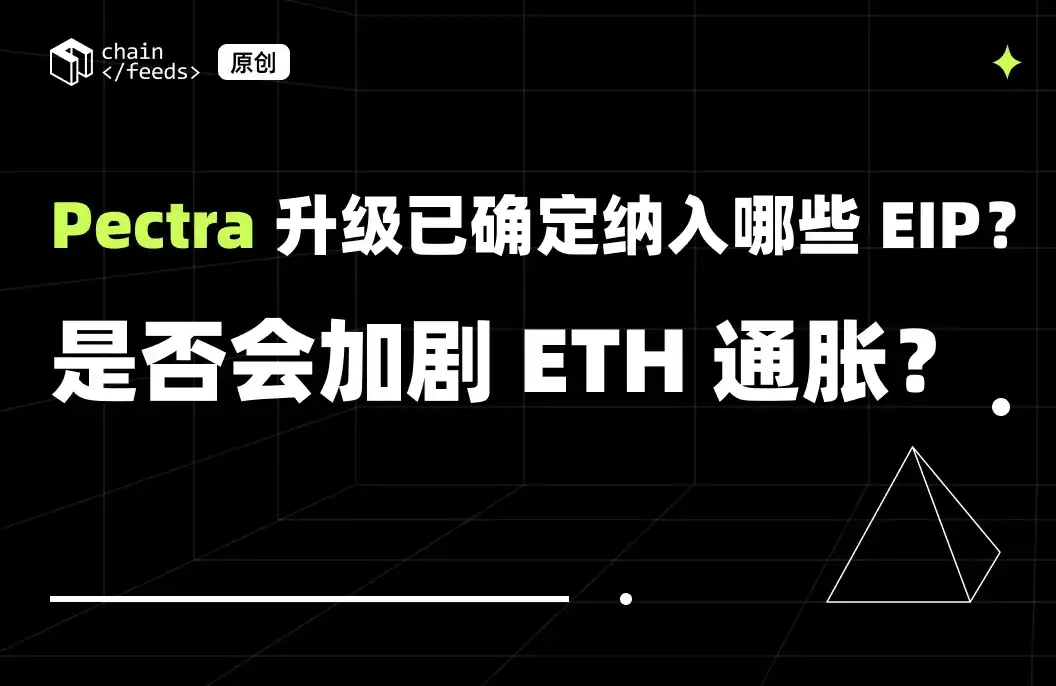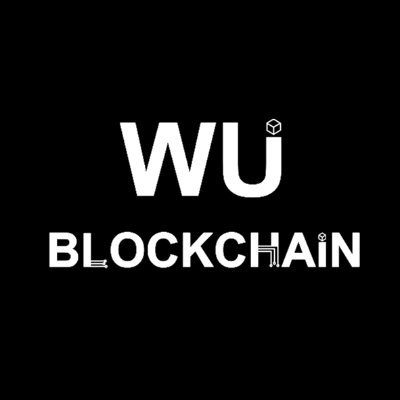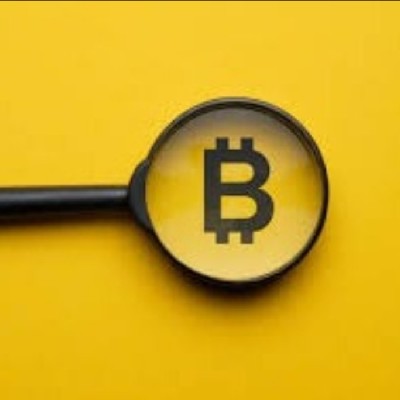Bitget:全球日交易量排名前 4!
BTC 市占率61.54%
Bitget 新幣上架 : Pi Network
BTC/USDT$83006.86 (+0.35%)恐懼與貪婪指數34(恐懼)
山寨季指數:0(比特幣季)
盤前交易幣種PAWS,WCT比特幣現貨 ETF 總淨流量:-$93.2M(1 天);+$445.2M(7 天)。Bitget 新用戶立享 6,200 USDT 歡迎禮包!立即領取
到 Bitget App 隨時隨地輕鬆交易!立即下載
Bitget:全球日交易量排名前 4!
BTC 市占率61.54%
Bitget 新幣上架 : Pi Network
BTC/USDT$83006.86 (+0.35%)恐懼與貪婪指數34(恐懼)
山寨季指數:0(比特幣季)
盤前交易幣種PAWS,WCT比特幣現貨 ETF 總淨流量:-$93.2M(1 天);+$445.2M(7 天)。Bitget 新用戶立享 6,200 USDT 歡迎禮包!立即領取
到 Bitget App 隨時隨地輕鬆交易!立即下載
Bitget:全球日交易量排名前 4!
BTC 市占率61.54%
Bitget 新幣上架 : Pi Network
BTC/USDT$83006.86 (+0.35%)恐懼與貪婪指數34(恐懼)
山寨季指數:0(比特幣季)
盤前交易幣種PAWS,WCT比特幣現貨 ETF 總淨流量:-$93.2M(1 天);+$445.2M(7 天)。Bitget 新用戶立享 6,200 USDT 歡迎禮包!立即領取
到 Bitget App 隨時隨地輕鬆交易!立即下載


Gas DAO 價格GAS
未上架
報價幣種:
TWD
數據來源於第三方提供商。本頁面和提供的資訊不為任何特定的加密貨幣提供背書。想要交易已上架幣種? 點擊此處
NT$0.{5}2279-0.00%1D
價格走勢圖
最近更新時間 2025-03-31 14:30:47(UTC+0)
市值:--
完全稀釋市值:--
24 小時交易額:NT$853,231.77
24 小時交易額/市值:0.00%
24 小時最高價:NT$0.{5}2279
24 小時最低價:NT$0.{5}2279
歷史最高價:NT$0.01394
歷史最低價:NT$0.{5}2011
流通量:-- GAS
總發行量:
1,000,000,000,000GAS
流通率:0.00%
最大發行量:
--GAS
以 BTC 計價:0.{12}8276 BTC
以 ETH 計價:0.{10}3759 ETH
以 BTC 市值計價:
--
以 ETH 市值計價:
--
合約:
0x6bba...2958469(Ethereum)
您今天對 Gas DAO 感覺如何?
注意:此資訊僅供參考。
Gas DAO 今日價格
Gas DAO 的即時價格是今天每 (GAS / TWD) NT$0.{5}2279,目前市值為 NT$0.00 TWD。24 小時交易量為 NT$853,231.77 TWD。GAS 至 TWD 的價格為即時更新。Gas DAO 在過去 24 小時內的變化為 -0.00%。其流通供應量為 0 。
GAS 的最高價格是多少?
GAS 的歷史最高價(ATH)為 NT$0.01394,於 2021-12-29 錄得。
GAS 的最低價格是多少?
GAS 的歷史最低價(ATL)為 NT$0.{5}2011,於 2025-03-17 錄得。
Gas DAO 價格預測
GAS 在 2026 的價格是多少?
根據 GAS 的歷史價格表現預測模型,預計 GAS 的價格將在 2026 達到 NT$0.{5}4465。
GAS 在 2031 的價格是多少?
2031,GAS 的價格預計將上漲 +47.00%。 到 2031 底,預計 GAS 的價格將達到 NT$0.{5}9553,累計投資報酬率為 +319.17%。
Gas DAO 價格歷史(TWD)
過去一年,Gas DAO 價格上漲了 -93.86%。在此期間, 兌 TWD 的最高價格為 NT$0.{4}4654, 兌 TWD 的最低價格為 NT$0.{5}2011。
時間漲跌幅(%) 最低價
最低價 最高價
最高價 
 最低價
最低價 最高價
最高價 
24h-0.00%NT$0.{5}2279NT$0.{5}2279
7d-0.00%NT$0.{5}2279NT$0.{5}2279
30d-80.65%NT$0.{5}2011NT$0.{4}1209
90d-88.46%NT$0.{5}2011NT$0.{4}2629
1y-93.86%NT$0.{5}2011NT$0.{4}4654
全部時間-99.98%NT$0.{5}2011(2025-03-17, 14 天前 )NT$0.01394(2021-12-29, 3 年前 )
Gas DAO 市場資訊
Gas DAO 持幣分布集中度
巨鯨
投資者
散戶
Gas DAO 地址持有時長分布
長期持幣者
游資
交易者
coinInfo.name(12)即時價格表

Gas DAO 評級
社群的平均評分
4.4
此內容僅供參考。
Gas DAO (GAS) 簡介
Gas DAO 代幣的深入解讀
Gas DAO 是一個去中心化自治組織(DAO),旨在為其社區成員提供直接的治理和利益。此任務通過其原生加密貨幣,Gas DAO Token(GAS),實現。本文將介紹 Gas DAO Token 的基本資訊、功能,以及它如何影響加密貨幣世界。
Gas DAO 代幣的基本資訊
Gas DAO Token(GAS)是 Gas DAO 平台的原生代幣,它的主要功能是提供賦予用戶對平台治理的權利。擁有 GAS 的用戶可以對平台的發展方向、改進提案以及新功能的實施進行投票。通過這種方式,Gas DAO 可以確保其決策過程完全反映社區成員的意願和利益。
Gas DAO 代幣的功能
除了提供治理權利外,GAS 還在平台內具有其他功能。首先,它可以作為交易媒介,在 Gas DAO 的去中心化市場中充當貨幣。此外,GAS 還可以用於參與平台的各種貨幣池,通過提供流動性來獲得獎勵。
最後,GAS 被用於獎勵那些對 Gas DAO 社區做出貢獻的人。平台有一個特殊的機制,被稱為 "燒毀 "機制。每當 GAS 被用於治理或對社區做出貢獻時,一定比例的 GAS 會被永久 "燒毀",以減少其總供應量。這促使了 GAS 的價值的增加,並激勵了更多的用戶參與社區活動。
Gas DAO 代幣及其對加密貨幣世界的影響
整體而言,Gas DAO 代幣反映了去中心化自治組織 (DAO) 的一種趨勢,即為社區成員提供更多的權力和影響力。通過GAS,用戶不僅能夠參與決策過程,還能通過提供價值和投資時間來增加其權益。這種模式將在未來的區塊鏈和加密貨幣項目中發揮越來越重要的作用,因為它有助於增強網絡的效率和公正性,並創造出真正屬於用戶的去中心化網絡。
GAS 兌換當地法幣匯率表
1 GAS 兌換 MXN$01 GAS 兌換 GTQQ01 GAS 兌換 CLP$01 GAS 兌換 UGXSh01 GAS 兌換 HNLL01 GAS 兌換 ZARR01 GAS 兌換 TNDد.ت01 GAS 兌換 IQDع.د01 GAS 兌換 TWDNT$01 GAS 兌換 RSDдин.01 GAS 兌換 DOP$01 GAS 兌換 MYRRM01 GAS 兌換 GEL₾01 GAS 兌換 UYU$01 GAS 兌換 MADد.م.01 GAS 兌換 AZN₼01 GAS 兌換 OMRر.ع.01 GAS 兌換 SEKkr01 GAS 兌換 KESSh01 GAS 兌換 UAH₴0
- 1
- 2
- 3
- 4
- 5
最近更新時間 2025-03-31 14:30:47(UTC+0)
Gas DAO 動態

Merlin Chain 升級 AA 錢包,支持其平台幣 MERL 作為 GAS 代幣
Bitget•2024-11-13 12:39

Pectra升級已確定納入哪些EIP?是否會加劇ETH通膨?
已確定的 EIP 將提升帳戶的可程式性、以太坊的驗證效率及質押優化等,未確定的 EIP 聚焦於如何提升 L2 擴展性。
BlockBeats•2024-10-23 06:49

以太坊Meme計畫Daram社群慈善基金完成首次慈善活動
Odaily星球日报•2024-10-21 12:42

Meme 項目 Daram 在 24 小時內上漲超過 420%,已獲得 Vitalik 兩次讚賞
Bitget•2024-10-15 15:30

Osmosis 現在支持歐元穩定幣 EURe 作為 GAS 費用
Bitget•2024-09-26 12:40
購買其他幣種
用戶還在查詢 Gas DAO 的價格。
Gas DAO 的目前價格是多少?
Gas DAO 的即時價格為 NT$0(GAS/TWD),目前市值為 NT$0 TWD。由於加密貨幣市場全天候不間斷交易,Gas DAO 的價格經常波動。您可以在 Bitget 上查看 Gas DAO 的市場價格及其歷史數據。
Gas DAO 的 24 小時交易量是多少?
在最近 24 小時內,Gas DAO 的交易量為 NT$853,231.77。
Gas DAO 的歷史最高價是多少?
Gas DAO 的歷史最高價是 NT$0.01394。這個歷史最高價是 Gas DAO 自推出以來的最高價。
我可以在 Bitget 上購買 Gas DAO 嗎?
可以,Gas DAO 目前在 Bitget 的中心化交易平台上可用。如需更詳細的說明,請查看我們很有幫助的 如何購買 指南。
我可以透過投資 Gas DAO 獲得穩定的收入嗎?
當然,Bitget 推出了一個 策略交易平台,其提供智能交易策略,可以自動執行您的交易,幫您賺取收益。
我在哪裡能以最低的費用購買 Gas DAO?
Bitget提供行業領先的交易費用和市場深度,以確保交易者能够從投資中獲利。 您可通過 Bitget 交易所交易。
在哪裡可以購買加密貨幣?
影片部分 - 快速認證、快速交易

如何在 Bitget 完成身分認證以防範詐騙
1. 登入您的 Bitget 帳戶。
2. 如果您是 Bitget 的新用戶,請觀看我們的教學,以了解如何建立帳戶。
3. 將滑鼠移到您的個人頭像上,點擊「未認證」,然後點擊「認證」。
4. 選擇您簽發的國家或地區和證件類型,然後根據指示進行操作。
5. 根據您的偏好,選擇「手機認證」或「電腦認證」。
6. 填寫您的詳細資訊,提交身分證影本,並拍攝一張自拍照。
7. 提交申請後,身分認證就完成了!
加密貨幣投資(包括透過 Bitget 線上購買 Gas DAO)具有市場風險。Bitget 為您提供購買 Gas DAO 的簡便方式,並且盡最大努力讓用戶充分了解我們在交易所提供的每種加密貨幣。但是,我們不對您購買 Gas DAO 可能產生的結果負責。此頁面和其包含的任何資訊均不代表對任何特定加密貨幣的背書認可,任何價格數據均採集自公開互聯網,不被視為來自Bitget的買賣要約。
Bitget 觀點

Wu Blockchain
9小時前
Recently, the Solana community has been discussing increasing the capacity of Compute Units (CU). CU is similar to Ethereum's Gas, which is used to limit transaction complexity and protect network resources. The current Solana block limit is 48M CU, and relevant proposals include
GAS-6.12%
S-3.36%

Shani_daniyal*
15小時前
$PARTI.COIN,
$PARTI Particle Network (PARTI) is a modular Layer-1 blockchain designed to solve the fragmentation of users, liquidity, and interactions across multiple blockchains in the Web3 ecosystem. Here's a breakdown of its fundamental analysis:
Tokenomics
- Maximum supply: 1 billion PARTI tokens
- Circulating supply: 233 million PARTI tokens
- Token distribution:
- 3% allocated to HODLer Airdrop participants
- 23.3% available for trading on Binance
- 3% reserved for marketing campaigns six months post-listing
Use Cases
- *Staking & Governance*: PARTI holders can participate in ecosystem voting and contribute to network development.
- *Universal Gas Token*: PARTI serves as the native gas token for Particle Network, settling gas fees across chains.
- *Universal Liquidity Token*: PARTI facilitates cross-chain atomic swaps and earns swap fees.
Technical Analysis
- Particle Network utilizes a dual staking model to power Chain Abstraction.
- The platform features Universal Accounts, allowing users to manage a single address and balance across multiple supported blockchains.
Market Sentiment
- The current market sentiment is neutral, with the price fluctuating greatly ¹.
- Particle Network has a strong social media presence
GAS-6.12%
PARTI-8.05%

Crypto News Flash
17小時前
How Jack Du Rose Went From Jewels To Building DAOs
While most people associate diamonds with luxury, Jack Du Rose saw it as the beginning of a much deeper transformation. He was once known as a designer of intricately detailed luxury jewelry and unique collections—including “Danger,” a series of jewelry inspired by the world’s deadliest animals.
But who would have thought that the man who once collaborated with Damien Hirst on a diamond-encrusted skull project would now be a major figure in the global crypto industry.
Jack didn’t jump into blockchain because it was a trend. Instead, his move came from his boredom with managing a global supply chain in the jewelry business that he found complicated, inefficient, and overly reliant on old hierarchies. It was at this point that his desire to create a more equitable and open system of collaboration began to grow.
Around 2017, Jack began to immerse himself in the world of Ethereum and the concept of DAOs—decentralized autonomous organizations. To the uninitiated, DAOs may sound like a confusing technical term. But for Jack, it was a way out of the rigid organizational structures that had been holding back many potential projects.
He then founded Colony, a DAO platform designed to help teams, communities, and even altcoin startups work together without having to abide by traditional management structures. With a contribution-based reputation system, Colony allows people from all over the world to get involved in projects they care about and be rewarded based on real results, not titles or positions.
Furthermore, Colony also opens up funding opportunities that were previously difficult for small projects to access. Startups can immediately prove their ideas are viable through community contributions and get funding without having to go through the VC door that is sometimes only open to those who “have connections.”
Talking to Jack Du Rose is like a light philosophical discussion about the “future of work.” He believes that hierarchy is not the only way to organize people in large projects. On the other hand, he also doesn’t believe in a completely free system. He believes that the key is in balance—where real contributions are rewarded.
In his various writings on the Colony blog and interviews, Jack often discusses how the world of work could change drastically if we stopped thinking vertically. He even mentioned that DAOs , if implemented correctly, could be the “office of the future” that would allow global teams to work without being tied to a traditional location or working hours.
Just imagine: you live in New York, join a project that is being worked on by developers in Berlin and designers in Lagos, and everyone gets rewarded for their contributions. That’s the world Jack wants to build with Colony.
Although Colony was originally built on Ethereum, Jack and his team didn’t stop there. They saw the problem of transaction fees and began to move to networks like Arbitrum that were cheaper and faster. This move was not just a technical one but also a strategy to get more people on their platform without being hampered by gas fees that are a headache.
However, this change was not made in a hurry. Jack maintained Colony’s original values: open collaboration, transparency, and individual empowerment. He believes that in the future, crypto projects will be judged not only by the technology they use but also by how they give everyone the space to contribute.
Now, while no longer literally covered in diamonds, Jack seems to have found something far more valuable—the trust and contributions of a global community that chooses to work independently. And if you think about it, isn’t that a lot more glittering than mere jewelry?
UP-3.03%
GAS-6.12%

muphy
18小時前
$PARTI’s Integration into Bitget’s Innovation and Web3 Zone: A Strategic Move for Growth
Particle Network's integration into Bitget's Innovation and Web3 Zone represents a significant strategic move aimed at fostering growth and enhancing the adoption of decentralized technologies. This collaboration not only amplifies the visibility of Particle Network's native token, $PARTI , but also aligns with Bitget's commitment to providing its users with access to pioneering blockchain projects.
Understanding Particle Network and PARTI
Particle Network stands as Web3's largest chain abstraction infrastructure, addressing critical challenges in the decentralized ecosystem, such as user, data, and liquidity fragmentation. Its core innovation, Universal Accounts, offers users a singular account and balance across multiple blockchain networks, streamlining interactions within the Web3 space. The backbone of this system is the Particle Chain, Particle Network's Layer 1 blockchain, which powers Universal Accounts and facilitates seamless cross-chain activities. To demonstrate this capability, Particle Network introduced UniversalX, the first-ever chain-agnostic Mainnet decentralized application (dApp). UniversalX enables users to trade using tokens from any blockchain, consolidating assets across various ecosystems and allowing gas fee payments with any token. The PARTI token is integral to this ecosystem, underpinning the economic model of Particle Network and its associated infrastructure.
Bitget's Innovation and Web3 Zone
Bitget, a leading global cryptocurrency exchange, established the Innovation Zone to serve as a dedicated platform for trading new and innovative token offerings. This initiative caters to users eager to explore emerging projects in the crypto space, including those related to decentralized finance (DeFi), artificial intelligence (AI), and Web3 technologies. The Innovation Zone is designed to provide a secure and user-friendly environment, mitigating the technical complexities often associated with decentralized exchanges and self-managed wallets. By implementing a rigorous vetting process, Bitget ensures that only quality projects with potential are listed, thereby protecting users from low-quality or fraudulent tokens.
Strategic Implications of PARTI's Listing
The inclusion of PARTI in Bitget's Innovation and Web3 Zone carries several strategic benefits:
1. Enhanced Market Exposure: Listing on Bitget provides Particle Network with access to a broad user base, increasing the visibility and accessibility of the PARTI token. This exposure is crucial for driving adoption and fostering a vibrant community around the project.
2. Validation of Project Credibility: Bitget's stringent listing criteria serve as a quality assurance mechanism. PARTI's acceptance into the Innovation Zone signals to investors and users that Particle Network meets high standards of project development, team competence, and market potential.
3. Facilitation of Liquidity and Trading Volume: Being part of a reputable exchange enhances the liquidity of the PARTI token, encouraging active trading and price discovery. Increased liquidity is vital for the token's stability and attractiveness to both retail and institutional investors.
4. Alignment with Web3 Growth Trends: As the blockchain industry gravitates towards Web3 solutions, Particle Network's presence in Bitget's Web3 Zone positions it at the forefront of this evolution. It underscores the project's commitment to advancing decentralized technologies and integrating with the broader Web3 ecosystem.
Conclusion
The integration of Particle Network's PARTI token into Bitget's Innovation and Web3 Zone is a strategic maneuver that amplifies the project's growth trajectory. It leverages Bitget's robust platform to enhance market presence, validate project credibility, and facilitate liquidity—all of which are pivotal for the widespread adoption of Particle Network's innovative solutions in the decentralized landscape.
$PARTI
CORE+3.38%
MOVE-3.79%

muphy
19小時前
$PARTI’s Role in Advancing Chain Abstraction and Universal Accounts
1. Understanding the Problem: Blockchain Fragmentation
One of the biggest challenges in Web3 is the fragmentation of users, assets, and liquidity across different blockchains. Currently, users must manage multiple wallets, maintain balances in different native tokens for gas fees, and navigate complex bridging processes when interacting across chains.
This fragmentation creates:
Poor user experience – Switching between networks requires different wallets, making Web3 difficult for mainstream users.
Security risks – Bridging assets between chains is a common attack vector, leading to billions lost in hacks.
Liquidity silos – Assets are locked within individual blockchains, reducing overall capital efficiency.
2. What is Chain Abstraction?
Chain abstraction is the solution to this fragmentation problem. It aims to make Web3 as seamless as Web2, where users don’t need to worry about which blockchain a service operates on. Instead, they can interact with multiple chains through a unified interface.
Particle Network, powered by $PARTI, is pioneering chain abstraction by introducing:
Universal Accounts – A single account that works across multiple blockchains.
Unified Liquidity & Gas Fee Abstraction – Users no longer need to hold native tokens for gas fees on different chains.
Interoperability Solutions – dApps can seamlessly interact with multiple chains without requiring users to bridge assets manually.
3. Universal Accounts: A Game Changer for Web3
The Universal Account is a revolutionary concept introduced by Particle Network. Instead of users needing separate wallets and private keys for each blockchain, a single account can be used across all networks.
Key Features of Universal Accounts:
1. One Account, Multiple Chains – Users can interact with Ethereum, Solana, BNB Chain, and other blockchains using a single account.
2. No Need for Native Gas Tokens – Gas fees can be paid in stablecoins or other supported assets, removing the need to hold multiple native tokens.
3. Seamless dApp Experience – dApps can integrate Universal Accounts, making it easier for users to interact with their platforms without complex onboarding steps.
4. Enhanced Security – Particle Network’s infrastructure removes the need for risky private key management by implementing MPC (Multi-Party Computation) and Account Abstraction (ERC-4337).
How It Benefits Web3 Adoption:
New users can onboard instantly without needing to understand wallet mechanics.
Developers can build cross-chain applications without users needing to bridge assets manually.
Institutions can leverage Web3 with improved security and compliance mechanisms.
4. How $PARTI Powers Chain Abstraction and Universal Accounts
$PARTI is the native token that fuels Particle Network’s ecosystem. It plays a crucial role in:
1. Transaction Processing & Gas Abstraction
Users can pay gas fees in $PARTI or stablecoins instead of native blockchain tokens (ETH, BNB, MATIC, etc.).
dApps using Universal Accounts can subsidize gas fees for users, improving the onboarding experience.
2. Security & Staking
MPC-based wallets and Account Abstraction mechanisms require staking $PARTI to participate in securing the network.
Validators and relayers in the system use $PARTI for collateral, ensuring trust and security.
3. Governance & Incentives
$PARTI holders can vote on protocol upgrades, fee structures, and ecosystem incentives.
Developers building on the Particle Network can earn rewards in $PARTI for contributing to the ecosystem.
5. The Future of Web3 with Chain Abstraction
The introduction of Universal Accounts and Chain Abstraction through Particle Network is a major step toward mass adoption of blockchain technology.
Potential Future Developments:
Integration with Major Layer 1 & Layer 2 Blockchains – Expanding Universal Account support to even more ecosystems.
Adoption by Web2 Companies – Enabling traditional tech companies to integrate blockchain services effortlessly.
More dApps Utilizing $PARTI – Increasing demand for $PARTI as developers adopt Particle Network’s infrastructure.
Conclusion
$PARTI is at the core of solving Web3’s fragmentation problem by enabling Universal Accounts and Chain Abstraction. By removing complexity, improving security, and making blockchain interactions seamless, Particle Network and $PARTI are laying the foundation for the next era of decentralized applications and Web3 mass adoption.
$PARTI
CORE+3.38%
ETH+1.02%
相關資產































